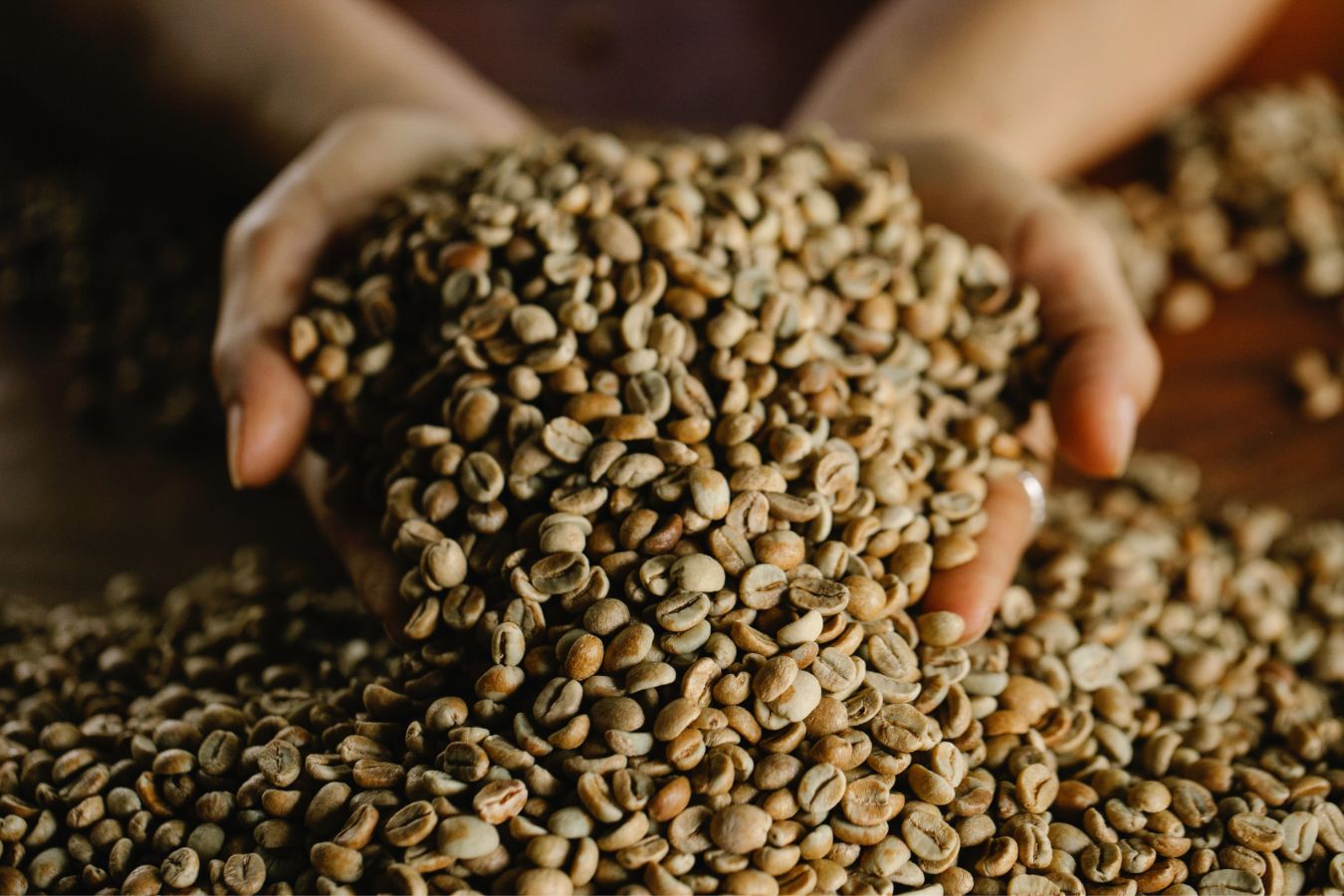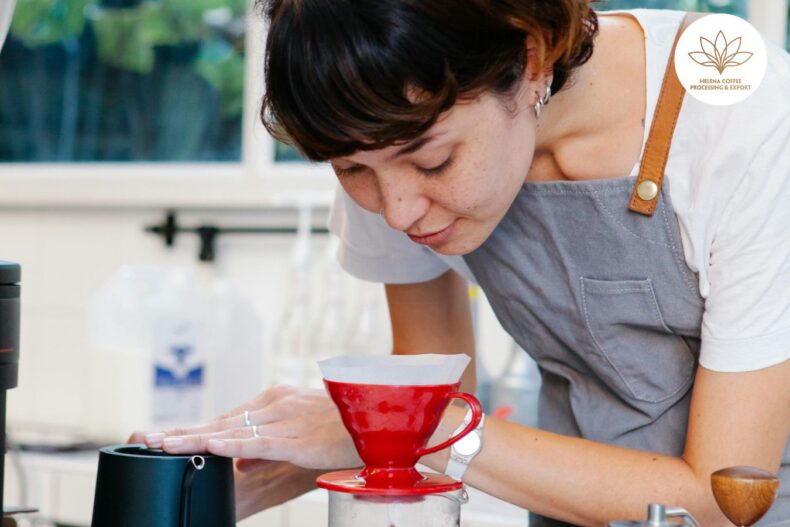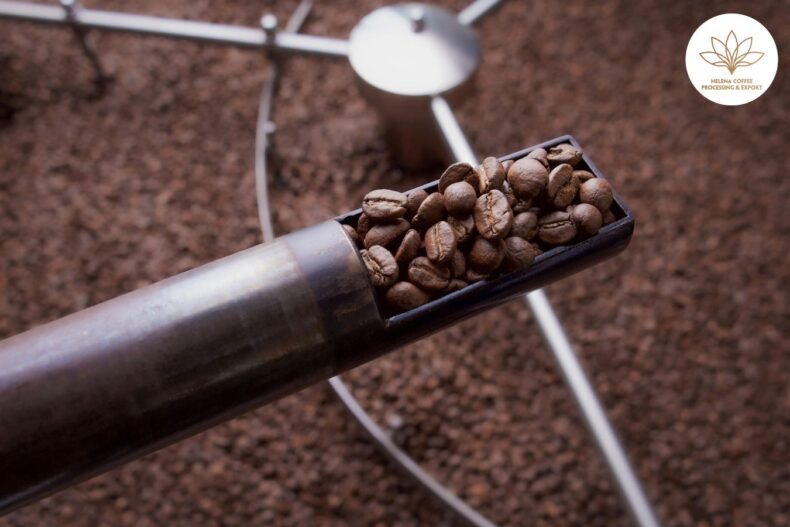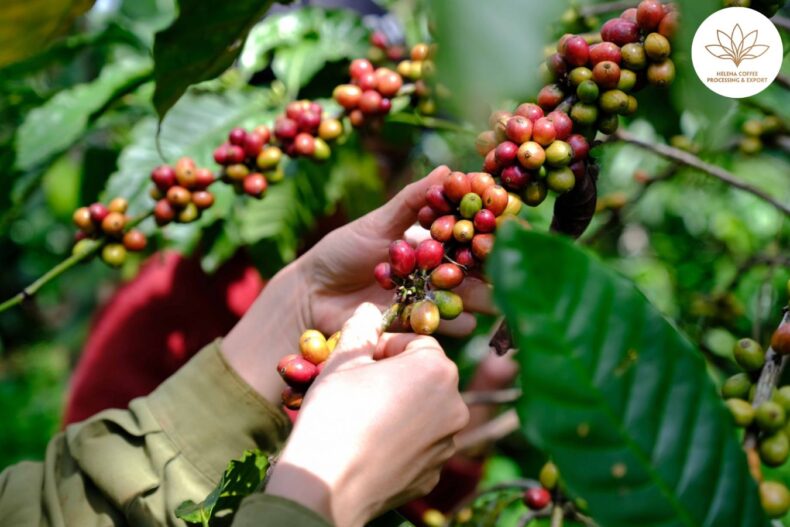
But don’t worry, there are some simple ways to distinguish the different types of green coffee. And find a batch of green coffee that suits your needs. Let’s find out with Helena through the following article.
Dear coffee buyer: Not all green coffee beans is the same
Coffee beans Colombia or Ethiopia? Preliminary processing by Washed or Honey method? Like Bourbon or Typica, Caturra? There are many varieties of green coffee, and the differences between them affect both the taste of the coffee and the way you roast it.
Here are some points related to buying green coffee you need to consider:
1. Origin: Coffee growing conditions, including climate, humidity, and soil, affect the aroma and flavor of the coffee. They are going from big to small factors like trying coffee from different countries. Then try other regions, before comparing the differences between farms and lots from one area.
2. Breed: The species and variety of coffee (the genetics below the species) significantly impact the cup of coffee you drink. The yellow Bourbon variety, SL-28 or Gesha, is a different taste experience
3. Altitude: The higher you go, the lower the temperature. This can make green coffee grow slower and allow more sugars to increase. As a result, coffees at higher altitudes have more complex flavor profiles. The taste is sweet and often more acidic than those grown in warmer and lower temperatures.
However, when considering altitude, don’t forget that different regions have different temperatures. For example, it is too cold to grow coffee higher than 600 masl in Hawaii. On the Galápagos Islands, specialty coffees can produce as little as 200 masl; keep this in mind when comparing coffees, especially if they come from different countries or even different continents.
4. Processing: This is how the coffee cherries ripen, or more precisely, the seeds are removed from the fruit.
Natural / dry-processed coffee: whole ripe coffee cherries are dried before removing the outer skin. This cooking method yields more fruity and sweet flavors.
Wet / Washed coffee: is coffee that is peeled before drying. Therefore, the taste of this coffee is less sweet; the taste is much cleaner. In return, these coffees are more acidic.
Processing honey: remove the skin but leave some mucilage, or flesh, around the seeds during drying. This creates a sweet, thick “body” flavor compared to washed/wet coffees.
How to find the proper green coffee
Green coffee classification
Classification green coffee
You know which coffee is proper for you to start with tasting. It takes a lot to taste. Try different types of coffees coffee beans and make a note of each one. Rate every coffee you have on a scale of one to ten. Then, add acidity, sweetness, body/mouthfeel, and aftertaste notes.
You can also comment on the taste and aroma of your coffee (both the ones you like and the ones you don’t). If possible, include origin, variety, altitude, and processing method.
Perhaps you have outlined the type of coffee you want at this stage? You’ll soon form an idea of what coffees you like and which ones you don’t.
If you are making coffee that someone else has roasted, check the beans and note the roast level. Does coffee have oil or not? Chocolate color or cinnamon color?
The degree of roasting affects the taste and aroma of the coffee. In general, the lighter the roast, the easier it is to enjoy the unique flavor of the coffee, including fruit and acidity. Darker-roasted coffees typically have a larger body, minor edge, and a more oily surface.
If possible, drink at specialty coffee shops and choose single-origin coffees instead of blends.
Things to know when buying green coffee
There are several online green coffee suppliers around the world. But before you order, consider the cost of the output of the coffee. Ho Chi Minh City, Vietnam, has many retail and wholesale coffee suppliers.
Certain types of coffee beans can be harder to find during certain seasons. Coffee is an agricultural product, which also has a harvest season. However, different countries have different harvest times. And just like bread or fruit, the freshness of the coffee bean will affect the quality. You should not buy green coffee with more than one year of shelf life.
When you have bought green coffee
Start with the experiment: take a batch and roast with three to five different profiles. Then take a few and roast them all with the same profile. Record the results of both of these tests to help you understand the impact of roast profiles on different types of green coffee. Then do all of this again with other beans and shapes until you get the perfect cup of coffee.
Tasting is also a great way to learn a lot in a short amount of time. These facts allow you to try a variety of coffees in a short time and take note of the flavors.
Follow coffee festivals, local specialty green coffee shops and schools on social media, and follow the Specialty Coffee Association (SCA) website. SCA also offers courses in coffee sensibility and roasting information.
And remember, research is excellent, but experimenting is the best way to learn. The more you taste and compare, the easier it will be to find your favorite coffee producers.


